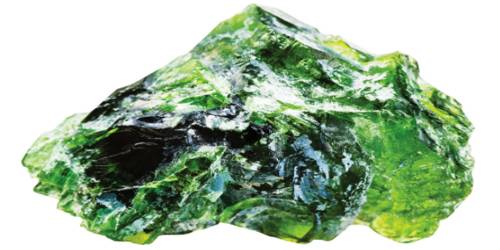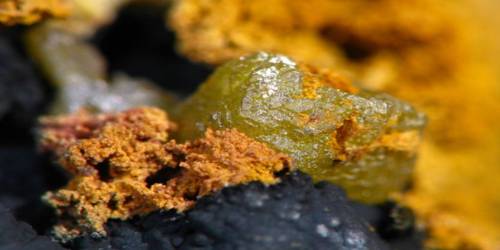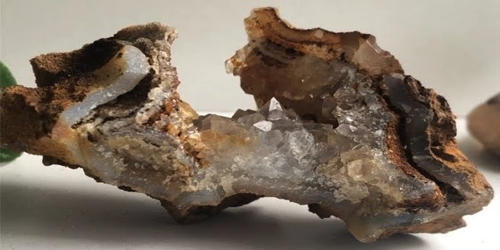Definition –
Alexandrite is a member of the chrysoberyl family of stone, some of the rarest stones on earth. It is the traditional birthstone for the month of June (along with the pearl) and the Anniversary stone for the 55th year of marriage. It is also considered Friday’s stone, or the stone of “Friday’s Child.” Natural alexandrite of good color and clarity is an extremely expensive gem, however, lab-created alexandrite can be found in many jewelry stores. It sits at 8.5 on the Moh’s scale, making it one of the hardest gemstones.
The color of Alexandrite changes under different lighting conditions. If viewed in daylight, its color is greenish blue to dark yellow-green. If viewed in incandescent or candle light, its color is pink to red. Alexandrite is a very rare and highly valuable gemstone, and until recently was extremely difficult to obtain due to its rarity.
History: According to a popular but controversial story, alexandrite was discovered by the Finnish mineralogist Nils Gustaf Nordenskiöld (1792-1866), and named alexandrite in honor of the future Tsar Alexander II of Russia. Nordenskiöld’s initial discovery occurred as a result of an examination of a newly found mineral sample he had received from Perovskii, which he identified as emerald at first. The first emerald mine had been opened in 1831.
The story of the stone’s discovery goes like this: Miners were working alone in the mountains one day, collecting emeralds. One miner gathered some stones, which looked like emeralds and took them back to the camp at the end of the day. But in the light of the campfire, the stones shone a brilliant shade of red! The miners were perplexed. When morning came and they saw that the stones were green again in the light, they realized that they had found a new and mysterious gem.
Some Facts of Alexandrite –
Mineral: Chrysoberyl
Chemistry: BeAl2O4
Color: Bluish green in daylight, purplish-red in incandescent light
Refractive Index: 1.746 to 1.755
Birefringence: 0.008 to 0.010
Specific Gravity: 3.73
Mohs Hardness: 8.5
Cleavage: 1,1 ; 3,2. Often exhibits parting along twinned crystals.
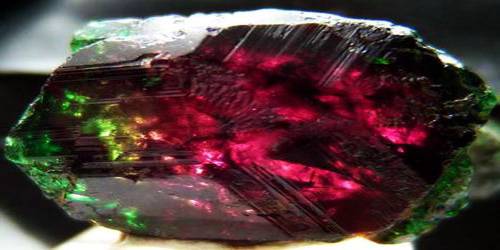
Occurrences and Properties of Alexandrite –
Alexandrite was originally discovered in the Sanarka River in the southern Ural Mountains of Russia. However, the Russian deposits have long since been exhausted, and Russian sources of Alexandrite are near impossible to obtain. Small deposits were subsequently found in Sri Lanka (Ceylon), and until the 1980’s these were the only two sources of this rare gemstone. Since then, new deposits have been discovered in Brazil, Tanzania, and Madagascar, with the Brazilian sources being the most significant.
Alexandrite 5 carats (1,000 mg) and larger were traditionally thought to be found only in the Ural Mountains, but have since been found in larger sizes in Brazil. Other deposits are located in India (Andhra Pradesh), Madagascar, Tanzania and Sri Lanka. Alexandrite in sizes over three carats are very rare.
The unique color change habit of Alexandrite is caused by slight impurities of the element chromium. The most desirable colors of Alexandrite are those that show a clearly visible pure hue color change, such as a pure green/blue in daylight to a pure red in incandescent light.
In addition to its color-changing habit, Alexandrite is a pleochroic gem, showing different color intensity when viewed at different angles. This factor must be taken into account when cutting Alexandrite gemstones. Alexandrite exhibiting chatoyancy does exist but is very rare, thus Alexandrite Cat’s eye is rarely available.
Alexandrite is a variety of the mineral chrysoberyl. What makes Alexandrite different from other varieties of the mineral, such as a cat’s eye, is the presence of not only iron and titanium, but also chromium as a major impurity. This combination of elements results in the green color of the gemstone. Alexandrite can be almost emerald colored, but is more often yellowish green or brownish green. The most prized shades of green of an alexandrite can be described as “emerald, grass, splendid or elegant” and the red shade may be described as “ruby, columbine, garnet, raspberry or fiery.” The more opaque the color, the more expensive the stone. Those stones of a more clear variety are described in color as “dull grass, grayish, opaque, olive or elm- leaf,” while the red shade may be referred to as “murky, cinnamon, Venetian, dull coral, or brownish.”
Today, several labs can produce synthetic lab-grown stones with the same chemical and physical properties as natural alexandrite. Several methods can produce flux-grown alexandrite, Czocchralski (or pulled) alexandrite, and hydrothermally-produced alexandrite. Flux-grown gems are fairly difficult to distinguish from natural alexandrite as they contain inclusions that seem natural. Czochralski or pulled alexandrite is easier to identify because it is very clean and contains curved striations visible under magnification.
Although the color change in pulled stones can be from blue to red, the color change does not truly resemble that of natural alexandrite from any deposit. Hydrothermal lab-grown alexandrite has identical physical and chemical properties to real alexandrite.
Alexandrite is usually found in sizes smaller than five carats. Sizes over five carats are usually considered large and will command a proportionally higher price. In Ceylon, some of the largest Alexandrites in the world are found, some weighing up to 60 carats each. These stones are of a darker color. Alexandrite is a hard, durable stone, rating an 8½ on the hardness scale. It is exceeded in hardness only by the diamond and corundum. It is because of this, and because it is one of the world’s most rare gems, that the Alexandrite can be one of the costliest gemstones in the world.
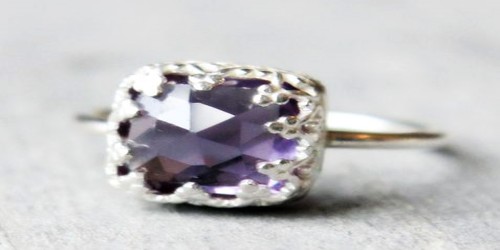
Uses and Benefits of Alexandrite –
Alexandrite is often listed as the birthstone for the month of June, but because of its rarity, pearls are also listed. It is available only from reputable dealers, and it comes at a price. This stone is not for amateurs, and even pieces of lower quality the size of diamond points (.015cts) are expensive.
Alexandrite is a rare and exquisite gemstone with outstanding color changing properties, and is most often faceted into round and cushion cuts that can bring out the best in its color. In jewelry, Alexandrite is used as rings and pendant centerpieces. Alexandrite in large sizes is extremely rare and valuable; most Alexandrite available is 2 carats or less.
Since the discovery of alexandrite, the gemstone has been thought to bring luck, good fortune and love. In Russia, it is considered to be a stone of very good omen. It is believed to bring balance in the interaction between the physical manifest world and the unmanifest spiritual, or astral world. It opens the crown chakra, bringing one access to the warm, healing energy and love of the universe. It is also said to strengthen intuiion, creativity, and imagination.
Alexandrite gemstones are not treated or enhanced. A synthetic form of Alexandrite exists, and it can be difficult to distinguish natural and synthetic Alexandrite from each other. Most synthetic Alexandrite is in fact synthetic Corundum or synthetic Spinel with added vanadium or chromium to induce the color-change habit.
Alexandrite encourages romance. It is also said that through the stone, joy enters the lives of people with too much self-discipline. The stone reminds us of our purpose in life and our origin. It gives hope to those who are in despair about their lives. It brings strength and constantly reminds them of the light. With its changing color, it is a reminder that life is not only what it seems to be.
Alexandrites are also useful for one’s emotional well being, as well as promoting self-esteem and the ability to be appreciative of the world around us. The stone assists one in developing “inner energy changes” which correspond with age and maturation. Alexandrites can aid in centering oneself. Metaphysicians say alexandrite crystals may be used to help one return to the origin of time and to connect with the beginning of one’s development.
Information Sources:

